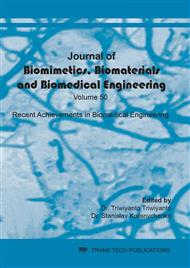p.25
p.39
p.51
p.59
p.73
p.89
p.103
p.113
p.123
Computational Study of Atomization Models and Optimal Design of a Pressurized Inhaler
Abstract:
Respiratory drug delivery has been under the spotlight of research for the past few decades, mainly due to rapid increase of pulmonary diseases. This type of drug delivery offers the highest efficiency for treatment. Despite its numerous benefits, there are some drawbacks in the method of respiratory drug delivery-the most important being poor delivery efficiency and high drug deposition in undesirable regions, such as the oropharynx. This study is focused on improving pressurized inhaler device, which is one of the most used devices for inhalation therapy throughout the world using the results and findings obtained from numerical analysis. In this study, three atomizer models are investigated and found that pressure swirl atomizer model closely represents the atomization phenomenon from a pressurized inhaler device. Parametric study is carried out using three parameters: nozzle diameter, dispersion angle and sheet constant to optimize the performance of the device. It is revealed that a reduction in nozzle diameter and dispersion angle help in generating fine (smaller diameter) particles, whereas increase in sheet constant is responsible for fine particle production. The values of nozzle diameter, dispersion angle and sheet constant are tuned to get the particles with minimum diameter as output which is desirable for the drug particles to get deposited in the smaller airways of lungs and increase the efficiency of drug delivery and improve the device performance.
Info:
Periodical:
Pages:
123-134
Citation:
Online since:
April 2021
Price:
Сopyright:
© 2021 Trans Tech Publications Ltd. All Rights Reserved
Share:
Citation:


